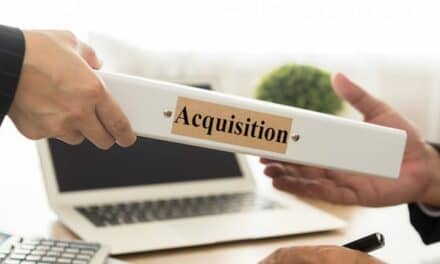Now more than ever, HTM professionals have an opportunity to make a difference in the way healthcare organizations plan for the future via equipment purchases.
By Melanie-Hamilton-Basich
The COVID-19 pandemic served as a wake-up call for the healthcare system, with expansive effects that go well beyond the immediate changes that were made to procure ventilators and personal protective equipment. “There most certainly have been changes related to capital equipment planning and purchasing post-COVID, but most apparent is finally realizing the importance of an unbiased capital plan,” says Morgan Ayers-Comegys, director of capital planning for Sodexo Clinical Technology Management. “Now, no matter the healthcare organization’s size, our clients are asking for help. And that, I think, is the biggest change.”
Everyone knows equipment needs to be replaced at some point. But the importance of having a plan in place and being able to find and acquire the right equipment when needed is really hitting home, according to the subject matter experts interviewed for this article. To prevent shortages of other equipment and supplies in the future, healthcare organizations are now fully embracing long-term planning.
This shift in thinking is partially in response to budget constraints that were already being imposed before the COVID- 19 pandemic exacerbated the problem. The upside for HTM professionals is that this combination of factors has also led to a new appreciation for the value of their expertise in planning for capital equipment purchasing. Biomeds have an opportunity to positively impact their organizations through direct involvement in this important process.
Taking Capital Equipment Planning to Heart
Ayers-Comegys says healthcare organizations used to ask for help making plans, but they didn’t always make the best use of her recommendations. “People are taking this information to heart now, finding great value in it for use across the whole organization at various operational levels,” she says.
The ways in which organizations are planning is also changing significantly. Part of this goes back to budget constraints. Changes to reimbursement affected the amount of financial payment healthcare organizations received for procedures—and shutting down elective procedures for so long during the COVID-19 pandemic left even less in the coffers to put toward capital equipment purchases. As a result, many healthcare delivery organizations are taking the process much more seriously to further control costs.
“In discussions with my current and previous clients, they are tightening their processes and procedures, where necessary, and adhering to both more precisely and strategically,” says Carol Davis-Smith, owner of her own consultancy, Carol Davis-Smith & Associates, LLC. “It is much less about ‘How can I spend my capital money?’ and more about ‘How can I save my capital money while maintaining safety, quality, and access?’”
Essentially, healthcare organizations are implementing the processes they had on paper to help them make the best purchasing decisions, now and going forward. “Requests are expected to have solid justification from the technical, clinical, and financial perspectives,” says Davis-Smith. “There is a greater interest in (or emphasis on) having and maintaining a data-driven, multi- year forecast of medical equipment needs.”
At the same time, more healthcare organizations that were holding on to paper processes are finally going digital. The vast majority already have, in fact, and they’re now open to incorporating more advanced systems into their planning, which Davis-Smith views as a good start. Still, she says she’d “like to see more tools to help folks manage and develop forecasts, in addition to the actual acquisition process.” Of course, much of the data required comes directly from HTM.
With acknowledgment of the importance of this process, HTM professionals have an opportunity to make a difference by sharing their knowledge and expertise. And if it’s been difficult to get a foothold in this process at an organization, now is the time to insist on HTM having a more prominent position on the planning committee, experts say.
Getting a Seat at the Table
One mistake HTM professionals should avoid, Ayers-Comegys cautions, is keeping their trade secrets to themselves. Instead, they should share their equipment expertise and find a seat at the capital planning table. When they do, she says, the results are phenomenal.
Specifically, biomeds should help train frontline staff about proper equipment use, Ayers-Comegys says, a move that could help prolong the life of a device. Such training can also help reduce the potential for repeat service calls, she maintains, since operator errors can compromise device quality.
“[HTM professionals] have a tremendous amount of information,” says Ayers-Comegys. “Sometimes, I think they don’t know how much critical data they have, and how beneficial it would be if it got in the hands of the right people: the decision-makers. Oftentimes, our professionals themselves don’t realize their value and how important their voice is.”
Equipment data, of course, is important, but it can only get hospitals so far. Every health- care organization should maintain a robust asset inventory in their CMMS that includes information about every aspect of all the equipment used, from when it arrives until it leaves the organization. You can plug this data into formulas to calculate when a piece of equipment should theoretically be replaced, but that’s not the whole picture.
“That’s the benefit of having HTM on the [capital planning] committee,” says Gordon Hosoda, chief of biomedical engineering at the Ore.-based VA Portland Health Care System. “We can bridge the technical and the clinical, and can help make it clear why we think a piece of equipment or an equipment system is needed. And we’ve developed enough respect from everyone on the equipment committee as subject matter experts that after their questions, they approve the request.”
Hosoda, for his part, co-chairs the capital equipment planning committee at his organization—a post he recommends that others in HTM assume. After all, he explains, a visible position can be very important in commanding respect from decision-makers and making your voice heard.
Ayers-Comegys concurs, saying that it’s also a way to level the playing field. “COVID has brought these professionals out of the basement,” she says. “It has given them a more viable seat at the table. And that is why I’m seeing more involvement at the table, not just executives. And they’re doing the work.”
Capital Equipment Planning Strategies for Success
To get the most out of HTM’s involvement in the capital purchasing process, it’s important to become familiar with exactly how it works. The AAMI Acquisition Guide for Clinical Technology Equipment, authored by Davis-Smith in 2019, is a publication that outlines the overall acquisition process phases: strategy, value analysis, funds approval and allocation, procurement, site preparation, receiving installation and acceptance, and post-installation debriefing and benefit validation.
The author says, at a minimum, the HTM department should contribute equipment performance data from the CMMS to the process, and ideally HTM “is integral to defining the clinical technology strategy all the way through disposition of the technology.” Davis-Smith also relays what she believes are the two most important things for HTM professionals to remember about this process: don’t assume and get involved.
Hosoda offers some additional insight into how to empower HTM to make a difference. Some professionals might not be used to getting to speak up, he says, and a change in culture might be needed.
Before the VA Portland Health Care System revamped its capital planning process to focus on a five-year cycle, for instance, Hosoda heard from some of his underrepresented hospital services that they felt there was no sense putting in a request for new equipment because they would never get it anyway. “And there was some truth to that,” he says. “So, we coaxed them back into the process, and it has been successful.”
Part of the problem was that some departments weren’t following protocol and would wait until an important piece of equipment broke, resulting in a bonified emergency. Their request would get pushed to the top, and the request from another service that went through the process would get pushed down. To keep requests from getting lost in the shuffle for various reasons, Hosoda’s organization is developing better tracking systems, he reveals. For instance, if something isn’t approved for purchase one year, it automatically gets pushed to the top of the list for the following year.
In addition to advocating for underrepresented services—usually the smaller ones— Hosoda emphasizes the importance of verifying that bigger services, like radiology, really do need new equipment when they request it. While he says his service directors are trustworthy and don’t fabricate needs, there have been times when certain services overreacted to worries about parts availability. Hosoda and his team were able to conduct their own research and determine that the equipment in question was in good working order and that parts and service would not, in fact, be a problem in the near term.
Another important thing to keep in mind is that every health system is different. You can’t assume where you work now operates the same way your previous employer did. In general, HTM departments can influence decisions, but the chief financial officer is usually the one who grants approvals. Knowing the difference between influencers and decision-makers is very helpful, experts say.
Along the same lines, “Just because you get approval, it doesn’t mean you get funds allocated to you,” warns Davis-Smith. “Those can be two completely different processes with different committees, decision-makers, etc. Understanding that can help you avoid a big fiasco.” And she speaks from experience, having made this mistake earlier in her career.
The Case for Cybersecurity
HTM has an opportunity to use its newfound spotlight to protect medical equipment and the networks they are connected to as cybersecurity becomes even more important to healthcare, in general. “It is no longer an option to know if your equipment and networks are adequately protected,” says Ayers-Comegys. “It is a must.”
This means HTM professionals need to be much more proactive in collaborating with colleagues in IT to make sure that their healthcare systems will be able to withstand hacking attempts. “It’s going to get worse,” warns Hosoda, “because the infrastructure as a whole is not geared toward security, and probably a lot of it is older tech.”
Fortunately for Hosoda, his employer, the Department of Veterans Affairs (VA), will be securing its data via its Cerner joint VA-Department of Defense modernization program. Specifically, the entire VA hospital system will be tasked with following more stringent cybersecurity protocols to maintain the integrity of data on both ends, protecting the healthcare infrastructure from attacks. It will require an overhaul of operating systems, networks, firewalls, and other components. “Even though it’s a lot of work, it’s good,” Hosoda says.
All of this will drastically change what the VA will require of any vendors they work with as well. This may result in resistance from some clinicians, Hosoda concedes. After all, they focus on how the equipment serves them and their patients and often don’t give much thought to the invisible threats of cyberattacks. “For them, it seems like a straight line, but it may have to go through a server or a workstation for their review, and all things include network setup, connectivity, protection architectures, servers, etc.,” Hosoda says.
This, he says, is why it’s essential that his colleagues in HTM help vet all equipment from a cybersecurity perspective. If a certain vendor’s device cannot meet network security needs, for instance, then it’s probably not the right product to purchase—even if it checks off all the other boxes. “There may come a time when we say, ‘We cannot buy that,’” Hosoda says. “Period.”
For her part, Davis-Smith hopes that the renewed focus on optimizing capital planning and making HTM professionals’ input central to the process ‘sticks.’ “We have just a great opportunity as HTM professionals to show up in a really meaningful way. We did all through the pandemic,” she says, “and we can keep contributing at a high value level going forward.”
Melanie Hamilton-Basich is associate editor of 24×7 Magazine. For more information, contact [email protected].
.





